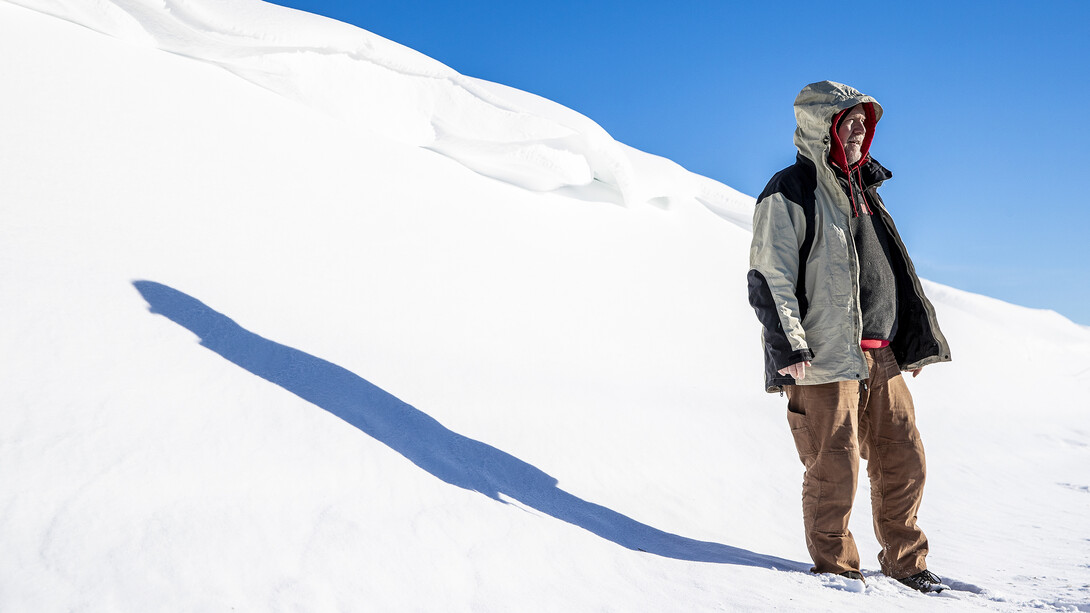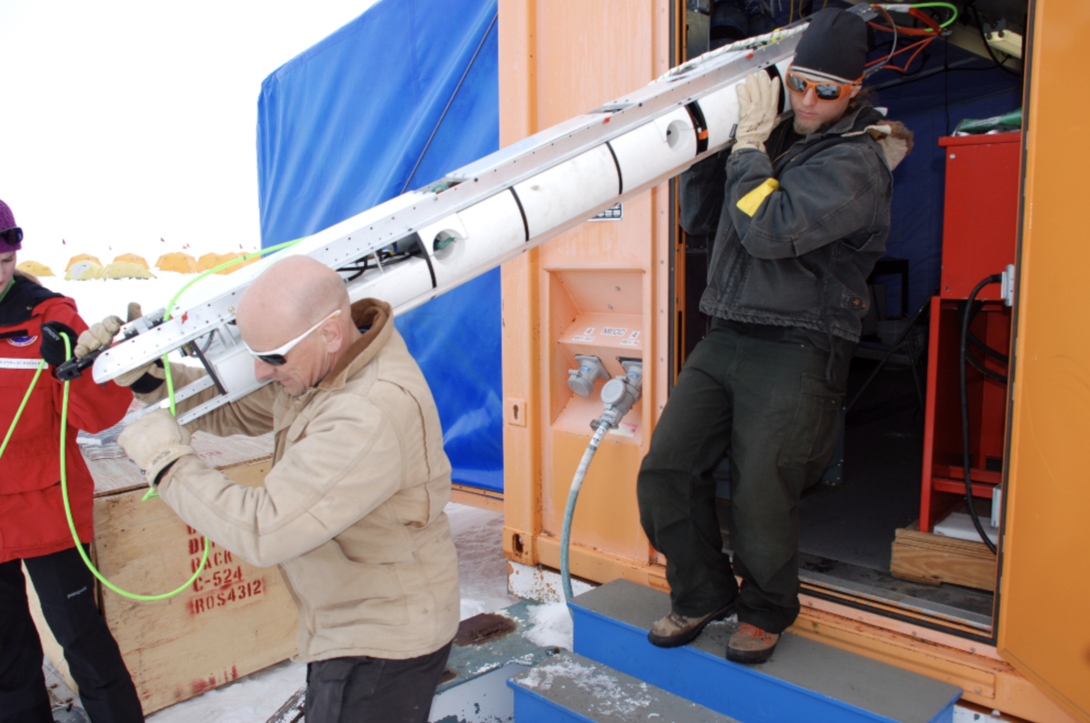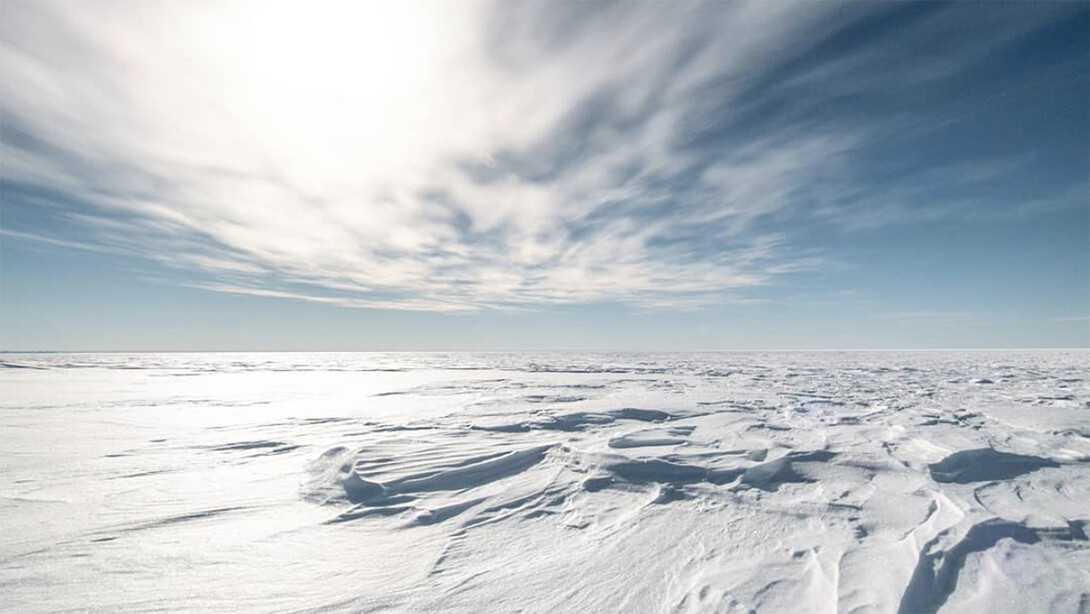
Nebraska expertise is helping a United States-led, multi-institutional expedition take a deep dive through the ecological history of Antarctica.
From a remote field camp nearly 500 miles from the South Pole, a University of Nebraska–Lincoln team of engineers and drillers will use a Husker-developed hot water drill to tap into Mercer Subglacial Lake. The body of water — located 1,200 meters below West Antarctica’s Whillans Ice Plain — is nearly twice the size of Manhattan and has been cut off from the ocean and atmosphere for millennia.
The Subglacial Antarctic Lakes Scientific Access, or SALSA, project will allow the international research team to gather uncontaminated samples of lake water, basal ice and sediments. Studies of the samples will expand our knowledge of Antarctic life in extreme environments, from modern microbes that thrive on and under the frigid ice sheet to fossil microorganisms that lived during warmer interglacial periods when vast seas flooded areas now occupied by ice.
The work will also allow researchers to deploy Deep SCINI, a Nebraska-developed submersible robot used to discover a new species of sea anemone in 2010. David Harwood, a professor of earth and atmospheric sciences and a lead scientist on the SALSA project, said the remotely operated vehicle will “fly” through the nearly 80-meter-deep subglacial lake to capture video, collect samples and document the presence of currents and particles in the water.
“There have been multiple periods over the last 20 million years when the West Antarctica Ice Sheet was not in place and life bloomed in a marine sea that covered the area,” Harwood said. “Our goal now is to collect and interpret samples to gain a better understanding of how climate changes have impacted Antarctica’s history and will impact future changes as our world warms.
“The main science goal is to learn more about the extreme microbial ecosystems that thrive beneath the ice today.”
Other Huskers among leaders of the project are James McManis, manager of Nebraska’s engineering and science research support facility; Dennis Duling, head driller; and Bob Zook, chief engineer of the Deep SCINI team.

Harwood and other scientists are particularly interested in fossil marine diatoms expected to be present within samples gathered. Diatoms, a single-cell algae found around the world in marine and terrestrial water bodies, are sensitive to environmental factors and useful in paleoclimate-based studies. Ornate glassy “shells” of diatoms allow scientists to date past warm periods when the algae grew in marine seas that covered West Antarctica. The remains of these diatoms are preserved in sedimentary deposits and will be sampled by the SALSA team.
Mercer Subglacial Lake is part of an active hydrological system flowing from under the large ice sheet toward the “coast,” or grounding zone, where the Ross Ice Shelf starts to float. It is possible that microbes living within the lake may thrive on relict organic carbon produced by fossil diatoms. Or, microbes with the sealed environment may survive on yet unknown energy sources — similar to the more than 4,000 types of microbes discovered in a 2013 study of Subglacial Lake Whillans. Many of the Whillans microbes survived by ingesting methane.
“This project has the potential for discoveries across many scientific fronts,” Harwood said. “But, we won’t know for sure until we get there, reach into the lake and bring back samples to study.”
Combined effort
Reaching Mercer Subglacial Lake has taken several years of coordination between scientists, drillers, contractors that support the U.S. Antarctic Program and the National Science Foundation, which is funding the project.
Overall, the SALSA project includes researchers from five nations and 14 U.S. universities. It is a multidisciplinary endeavor, bringing together experts in fields that include microbiology, geochemistry, glaciology, hydrology, sedimentology, geophysics and paleontology.
In the last two seasons, team members have worked together to transport necessary materials, equipment and workers from around the globe to McMurdo Station, located some 2,400 miles south of Christchurch New Zealand. Contractors from U.S. Antarctic Support have towed several sled convoys over the ice, using specialized tractors to move drilling equipment, scientific labs, fuel and other necessary facilities into place at the research site. Additional equipment and scientists have been transported to the site via ski-equipped aircraft from McMurdo Station.

Now, the SALSA research team — which includes 11 principal investigators from eight U.S. institutions, 12 technical staff and drillers, eight graduate students, three education and outreach specialists, 10 additional scientific collaborators and four international scientists — is ready to get to work. In total, 17 universities and research institutions are involved in this major U.S.-led research project.
Nebraska’s eight-member drill team and three-member Deep-SCINI ROV team, coordinated through a collaboration between Harwood and McManis, is funded through a sub-award from the Ice Drilling Program Office of Dartmouth College. This office oversees hot-water and ice-core drilling on behalf of the NSF and the U.S. Antarctic program.
The project will use a powerful hot-water drill designed and fabricated by the Nebraska team. The drill uses up to 72 gallons of near-boiling water every minute to melt a deep shaft into Mercer Subglacial Lake. The system is a unique “clean-access” drill, using ultra-fine filters and heavy bombardment of UV light to ensure that no surface microbes contaminate the pristine lake and enter Antarctica’s under-ice river system.
Once through the ice, the research team of more than 40 scientists will have between 10 and 14 days to collect water and ice samples, then sediment cores before exploring the lake environment with the Deep SCINI robot.
The submersible, which can travel several hundred feet away from the borehole, is more advanced than the model used to discover the Edwardsiella andrillae anemones in 2010. Zook led the upgrade of the ROV, allowing it to operate at depths beyond 1,200 meters. It also carries improved cameras, stronger thrusters, lasers to measure size and distance of items in the lake, and a gripper-arm to more efficiently collect samples.
“Deep SCINI is definitely more robust than previous versions,” Harwood said. “Those upgrades were necessary as we’re going much deeper for this project. They also make the robot more ready for whatever conditions we discover when we get into this active lake, which appears to have just started a multiple year-long draining cycle.”

Interstellar potential
Due to the extreme nature of the environments below the Antarctic ice sheet, the SALSA project may direct plans for future missions to outer space. In particular, researchers believe there could be correlation in where microbes could thrive on Europa, an icy Jupiter moon.
Scientists have speculated that life on Europa may exist in a liquid ocean below or pockets within the moon’s icy crust — similar to where organisms are being discovered in and under Antarctica by the SALSA team.
“Looking deeper into life in Antarctica will help us better understand the development of life and climate impacts here on Earth,” Harwood said. “But, lessons we learn through projects like SALSA, may also lead us to discovering life in extreme environments on other planets.”
More information on the Subglacial Antarctica Lakes Scientific Access project, including a description of its scientific themes, profiles of scientists guiding the research and a nearly live field blog updated from the drill site, is available on the SALSA website.








